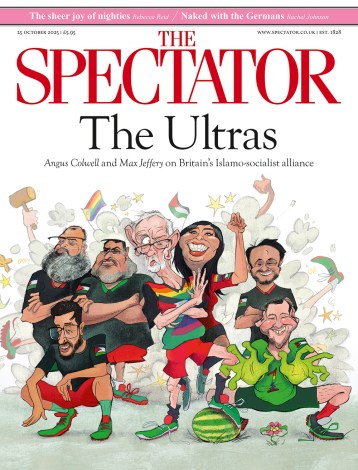Samuel Taylor Coleridge and Robert Southey were undergraduates when they met in June 1794, Coleridge at Cambridge university and Southey at Oxford. One of their earliest conversations concerned the political implications of the passions. A month later, on 28 July, the French Revolutionary Terror climaxed in the guillotining of the Incorruptible, Maximilien Robespierre. Evidence from across the Channel notwithstanding, Coleridge and Southey were certain that
the passions are not vicious — ’tis society makes the indulgence of them so. They resemble an assemblage of waters, destructive if they run wildly over the country, but the source of abundance if properly guided.
With youthful utopian optimism they theorised an imaginary community with the silly name of ‘Pantisocracy’ (derived from the Greek pan and isocratia, meaning ‘equal government by all’).
At first, Coleridge and Southey hoped their Pantisocracy could be established in America, which sounded to them an ideal place for a colony that would reform the passions by radically redistributing private property. ‘I have done nothing but dream of the system of no property every step of the way since I left you,’ Coleridge wrote to Southey in July. A land agent claimed that £2,000 would buy them 1,000 acres across the Atlantic and cover the costs of passage. They calculated that they would need at least 16 ‘gentlemen’ subscribers paying £125 each to realise Pantisocracy in Pennsylvania. Southey was already planning his packing — two or three pairs of ‘common blue trowsers’, six brown Holland pantaloons and two nankeen — when the project had to be scaled back to Wales.
Until 1794, America was neutral in the French Revolutionary Wars, but
by the autumn of that year Southey thought that America’s relations with both France and Britain were deteriorating, and crossing the Atlantic would be too dangerous. By early 1795, even Wales seemed an unlikely location for Pantisocracy: ‘America is still the place to which our ultimate views tend,’ wrote Southey, ‘but it will be years before we can go. As for Wales, it is not practicable.’
In A Revolution of Feeling, Rachel Hewitt argues that the domestic, financial and personal disappointments that destroyed the Pantisocracy pipedream reflected the decade’s political trajectory. Hewitt’s first book, Map of a Nation: A Biography of the Ordnance Survey (2010), contributed to recent trends for biographies of inanimate objects or natural phenomena. Her new book is a biography of the 1790s, focusing on how the decade was shaped and experienced by radical thinkers in England. Alongside Coleridge, Shelley, Godwin, Wollstonecraft, Wedgwood and other familiar figures — all of them already well served by individual or group biographies — Hewitt includes less celebrated radicals and experimental institutions.
The physician Thomas Beddoes (1760–1808), whose shortlived Pneumatic Institute in Bristol had overt political aims, is of particular importance. Hewitt interweaves Beddoes’s development of Hydraulic Theory with the rise and fall of Pantisocracy. Beddoes connected many forms of ill health to political mismanagement and inequality. He considered violent, antisocial passions the result of oppressive regimes and believed that popular violence was the inevitable ‘hydraulic’ outcome of the accumulation of energy in the face of deprivation and low spirits. He thought that ‘sympathetic’ government was necessary to ease popular tensions and envisaged a key role for education in channelling emotions into sociable and virtuous manners of expression.
Beddoes became one of Prime Minister William Pitt’s chief accusers, painting a bleak, dystopian picture of late 1790s Britain ‘strewed over with ruins’ after ‘the effects of popular indignation [had] burst forth in all its undistinguished fury’. But history proved hydraulic predictions false. Hewitt notes that, contra Beddoes, after the defeat of the 1798 United Irish Rebellion, radical political activism was stalled for the first two decades of the 19th century. ‘Pitt achieved his ends, not through education, but through the suppression of free speech and the right to assemble, the suspension of Habeas Corpus, and by rounding up remaining radicals.’ In 1817, Percy Bysshe Shelley reflected on the climate of post-1790s Britain: ‘Methinks, those who now live have survived an age of despair.’
Throughout her intricate but always accessible book Hewitt argues that feminists have a special interest in the politics of emotion or passion. In the past and present ‘emotional stereotypes are recruited to exclude women from positions of power, and to compel women to take on disproportionate responsibility for caring for children, the sick and the elderly’. Hewitt claims that the de-politicisation of emotion since the 1790s — the heightened perception of emotion as an individual rather than a social phenomenon — has discouraged women from challenging the way in which emotions and emotional negotiations are infected with highly gendered inequalities of power. For this reason she suggests, we still have much to learn from the 1790s:
the decade when the passions were collective political experiences and forces, when emotional regulation was a social negotiation between individuals’ claims and desires, and when revolutions were driven by feeling.
But even as she argues that the 1790s have much to teach contemporary feminists, Hewitt is clear-eyed and amusing about the limitations of Pantisocracy and Hydraulic Theory. Southey was convinced that women’s principal social role was to uphold moral ‘decency’, especially in periods of political turmoil. ‘I am for Liberty & Long Petticoats,’ he admitted. And for Coleridge, marriage was the ‘sole propriety’ and the very nucleus of community, despite his personal use of prostitutes. To this day, Hewitt argues, Hydraulic Theory remains a dominant ‘quack’ theory of gendered emotion ‘because it is founded on, and justifies, male political, economic and sexual supremacy’. The real revolution has yet to begin.






Comments